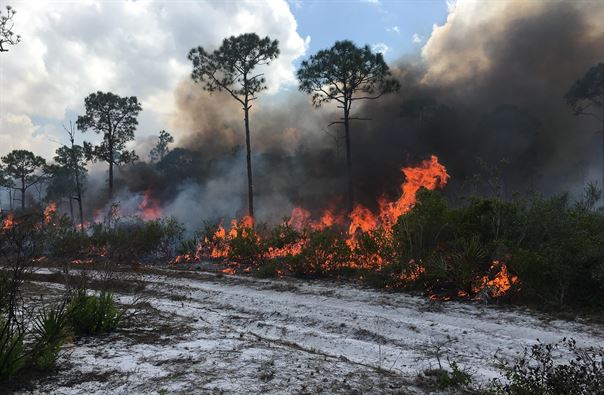from Environmental Research Letters
Highlights
As the state gets warmer every year due to the effects of climate change, California’s wildfire season is being fueled by offshore winds, dry vegetation, and drought. These fires result in public health risks from smoke and can result in long term energy shutoffs.
- Fire Causes
- Human exposure and vulnerability to fires is due to the encroachment on wildlands for urban and suburban development
- Fire suppression in areas that historically experienced low-intensity fires has led to the accumulation of “fuels” that ultimately promote bigger, intense fires
- The state’s five warmest years on record occurred in 2014-2018, with autumn temperatures rising and precipitation falling
- Rising temperatures, declining snowpack, and year-round lack of rain are extending the state’s fire season and will continue to do so
- Though climate change is fueling fire season, over 80% of fires during autumn in California are human-caused
- Smoke from these wildfires are causing schools and businesses to close to mitigate exposure to dangerous air pollution
- The climate model analyses in this report suggest that continued climate change will increase the number of days with extreme fire weather by the end of this century
- However, meeting climate goals set by the Paris Agreement will curb the increase of fire days
Increased air pollution from fires and fossil fuel emissions makes all of us more vulnerable to the current COVID-19 pandemic. With community energy resilience we can ensure that our power is clean and not further contributing to emissions in our communities. For a safe and healthy future for all, endorse the Climate-Safe California Platform to implement scalable solutions that can reverse the climate crisis.
Read more: https://iopscience.iop.org/article/10.1088/1748-9326/ab83a7


